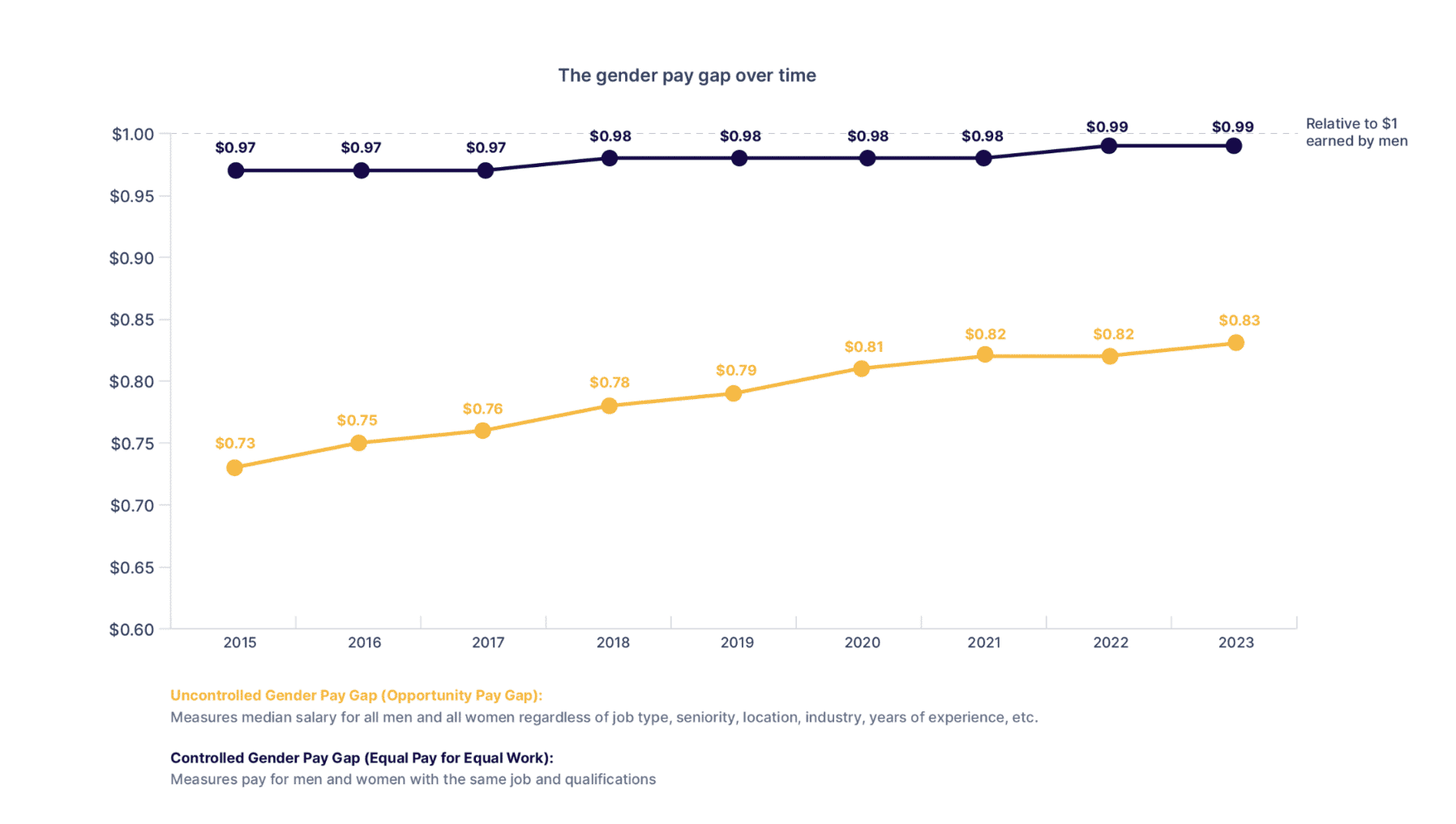In the modern workplace, diversity, and inclusion are indispensable elements of a thriving business approach; not just overused terminologies. An inclusive workplace where employees feel valued, respected, and supported can lead to higher engagement, better retention, and improved performance. But how can organizations measure their progress toward creating an inclusive workplace? This is where inclusion metrics come in!

In this blog post, we will provide a comprehensive guide to measuring diversity in the workplace through inclusion metrics. Let’s get started.
What Are Diversity Metrics & Why It’s Important To Know?
Inclusion metrics are quantitative measures used by employers to evaluate ways to improve diversity in the workplace. These metrics are also useful for tracking diversity and inclusion performance goals. By monitoring these metrics, employers can gain factual information on the costs and benefits of their DEI (Diversity, Equity, and Inclusion) initiatives, which can help them allocate resources more effectively.
Organizations have a responsibility to ensure that their workforce reflects the communities they serve and to create an inclusive culture that promotes success. Diversity and inclusion KPIs provide an objective way to measure performance and identify biases, fairness, and justice in the workplace.
Knowing these inclusion metrics can also help organizations identify risks, set goals, prioritize strategies, and evaluate the impact of their DEI programs.
10 Helpful Inclusion Metrics You Should Know
Inclusion metrics can vary from one company to another depending on their specific needs and goals. What an organization chooses to measure may depend on various factors. Regardless of the specific metrics chosen, it is important to ensure that diversity is promoted at every stage of the employee lifecycle.
This can help ensure that inclusion is happening at every level of the company. To achieve this, organizations can consider using diversity metrics that align with each stage of the employee lifecycle. The following are examples of diversity metrics that organizations can consider using:
1. Hiring & Recruiting
A study found that job candidates with distinctively black names are 2.1% less likely to receive callbacks from employers compared to candidates with distinctively white names.
To assess the diversity of hiring practices, organizations should consider tracking two key areas in their DEI data: the diversity of the hiring panel and the diversity of the applicant pool. Both of these factors are crucial to attracting a diverse range of candidates with different backgrounds, races, gender identities, sexual preferences, religious beliefs, and more.

Having a diverse hiring panel and human resources department can help ensure that there is no unconscious bias during the hiring process and that all candidates are treated equally.
2. Equal pay
To enhance employee productivity, creativity, and efficiency, it is crucial for employers to ensure pay equity among their employees. By providing equal pay, employers can attract top talent and retain them in their workforce.
However, there are currently two areas of concern that impact pay equity: gender and race-based pay disparity. According to the 2022 State of the Gender Pay Gap Report by Payscale, women earn 82 cents for 1 dollar made by men, highlighting the significant gender pay gap in the workforce.

However, by examining the pay discrepancies within your company, you can identify any possible disparities in your payment procedures and develop remedies to rectify them. In another study by Statista, 65% of those polled attribute equitable compensation to DEI programs, indicating that such initiatives have a significant impact on pay equality.
3. Representation
Ensuring diversity in your current workforce, particularly in senior management, is as crucial as attracting a varied pool of candidates during the hiring process. To enhance the representation of historically marginalized groups, it is essential to evaluate the existing state, pinpoint the areas where diversity is lacking, and devise a strategic plan to enhance the situation.
If you are successful in drawing a diverse range of candidates into your hiring pipeline, but your team still lacks diversity, it is possible that there is a bias in the recruitment process.
Conversely, you may have a diverse team, but your senior management may lack diversity. Gathering this information enables you to identify any biases or issues and implement necessary changes to accomplish your diversity objectives.
4. Promotions
A Mckinsey report found that men are more likely to get promoted, with only 86 women promoted for every 100 men. The promotion rate is even lower for Latina and female employees.
Improving diversity in promotion metrics can increase employee engagement and organizational growth. Monitor promotion applications and track promotion times across demographics to ensure equal opportunities. A gap in promotion rates may indicate performance or potential biases.
5. Retention
DEI aims to create a comfortable and accessible workplace for all, which reduces employee turnover rates. Companies that employ individuals from underrepresented groups, such as ex-convicts, experience high employee loyalty and low turnover rates. Measuring diverse employee retention rates involves segmenting data by age, race, gender, skills, and experience.
To improve diversity employee retention rates, organizations should identify reasons for quitting through exit interviews and engagement surveys. They should investigate involuntary attrition targeted at specific individuals to identify indications of conscious or unconscious bias. Addressing toxicity in the workplace, mismanagement, and lack of career advancement can help retain diverse employees and create a sense of belonging.
6. Accessibility
It is crucial to include employee satisfaction in your diverse employee retention strategies. A high employee turnover rate among underrepresented groups may indicate that they are unhappy with their job or do not feel included.
It is essential to evaluate both departing and remaining employees to address this. If you notice that a significant number of diverse employees are leaving, it may point to inclusivity problems and highlight the importance of employee satisfaction.

To promote inclusivity and improve employee satisfaction, consider making your company accessible to all. This could involve developing work benefits that cater to the diverse needs of your workforce, such as:
👉🏻 Providing equipment for employees with disabilities
👉🏻 Offering paid parental leave for working parents (regardless of gender)
👉🏻 Providing tuition assistance or student loan if any employee requires so
By taking these steps, you can help create a more inclusive and supportive workplace that values and prioritizes the needs of all employees, ultimately leading to higher employee retention rates and a more diverse and satisfied workforce.
7. Leadership
Diversity in a company’s leadership is crucial to increasing revenue. According to McKinsey & Company, companies at the top for gender diversity in the executive team are 25% more likely to have above-average profitability. At the same time, women of color account for only 4% of C-suite leaders.

Source: McKinsey & Company
According to Pew Research, 2020 saw an all-time high of 7.4% female CEOs of Fortune 500 companies. While three Asian American women serve as CEOs, no Black or Hispanic women head Fortune 500 companies.

Source: Pew Research Center
Apart from diversity, it’s equally important to evaluate the leadership commitment and see whether they are dedicated to diversity efforts. Inclusive leaders are the building blocks of an inclusive organization.
8. Partners & Vendors
Although it may seem like an uncommon metric, evaluating the diversity of partners and vendors is an essential aspect of promoting diversity and inclusion within an organization. It is not sufficient to only focus on the diversity of your organization’s workforce. Evaluating who your organization collaborates with is equally important.
By assessing the diversity of partners and vendors, companies can ensure that their collaborations are based on merit and not influenced by any biases. This can help promote a more diverse and inclusive supply chain, which is beneficial for business growth and reputation.
9. Mentorship Programs
McKinsey’s research indicates that 67% of Black employees lack a sponsor within their organization, even though 87% of companies have implemented a sponsorship program. An excellent example of an effective mentorship program is that of Lyft, which has implemented a program to support the professional growth of its Black and Latinx employees.

Source: Lyft
Tracking the accessibility of mentorship programs and assessing their effectiveness is a valuable way to monitor DEI efforts. When mentorship programs are part of a company’s overall DEI initiative, it promotes a more inclusive work environment, help achieve DEI goals, and increase diversity in leadership positions. One way to evaluate the effectiveness of these programs is by measuring the total number of hours mentors spend with their mentees.
10. Budget Allocation
Although DEI initiatives are not solely about financial investment, creating a culture that genuinely values diversity, equity, and inclusion requires adequate funding. VentureBeat reported that 79% of businesses intend to increase their DEI budgets in 2022.
Since 34% of employees have reported that DEI programs helped them identify unconscious biases and learn about systematic barriers to equality in the workplace, it is essential to maintain consistent funding for DEI programs and initiatives, including DEI certifications.
How To Choose Which Diversity & Inclusion Metrics Are Important?
Establishing metrics for diversity and inclusion is crucial for every organization. It is important to remember that there are no universal inclusion metrics to follow, as these should be customized based on your specific goals.

When selecting which inclusion metrics to measure, consider your business goals, such as increasing productivity or revenue. It’s also important to consider your company’s size and how diversity hiring can be implemented.
Leading companies can even consider going granular with their metrics, tracking data such as-
👉🏻 Tertiary institution
👉🏻 Sexual orientation
👉🏻 Disability
👉🏻 Health status
👉🏻 Employment status
👉🏻 Professional expertise
👉🏻 Immigration status
👉🏻 Religion/faith
👉🏻 Veteran status
👉🏻 Languages spoken, etc.
Having a diversity metrics dashboard can help you monitor the progress of your DEI initiatives and make adjustments accordingly.
Measuring Diversity & Inclusion At Workplace: 5 Things To Keep In Mind
It can be challenging to measure something as intangible as inclusion, and there are several factors that organizations need to keep in mind while measuring inclusion metrics. Here, we will discuss five things that organizations should keep in mind while ensuring inclusion metrics in the workplace.
Ensure Your Organizational Readiness
Diversity is a vital factor in the success of any organization. Those that lack diversity among their employees will struggle to thrive in the future. To measure diversity, an organization should assess the number of women, individuals from different ethnic backgrounds, and those with disabilities. Additionally, they should evaluate the proportion of LGBT employees and those with disabilities.
Let’s have a look at the areas that require significant changes when measuring diversity:
✔️ Comparing the organization’s progress with industry benchmarks
✔️ Identifying gaps in representation
✔️ Tracking attrition rates
✔️ Examining salary disparities
To ensure that diversity and inclusion efforts are effective, it is crucial to analyze whether adequate financial and human resources have been allocated for the programs, policies, and practices aimed at creating an inclusive workplace culture.
Foster A Strategic Effort
A DEI strategy should have SMART (Specific, Measurable, Attainable, Relevant, and Time-bound) goals focused on collective programs, policies, and processes to avoid overwhelm.

While the Talent/Human Resource team analyzes employees and culture, everyone in the organization shares accountability and ownership in developing and implementing these goals, regardless of their role.
Examine Your Existing Workforce Comprehensively
Improving workplace inclusivity and diversity requires a thorough examination of the current workforce, including employees’ skill sets, backgrounds, and cultural identities. This assessment is crucial in identifying areas that need improvement in terms of diversity. For instance, hiring more women can be a potential solution if there is a significant lack of women in leadership positions.
The absence of diversity in the workplace can result in discriminatory practices and biases. To address this, it is necessary to determine the root causes of the company’s lack of diversity and implement strategies that will promote diversity and inclusivity.
Incorporate Changes Into Your Current Hiring Process
Workplace diversity encompasses more than just race or gender, it includes differences in age, sexual orientation, religion, and more. A diverse team is better equipped to serve clients effectively.
There are several methods companies can use to assess diversity during the hiring process. One approach involves administering a questionnaire that covers topics such as cultural background, education & work experience.
Alternatively, conducting an open interview that allows candidates to share information about themselves and their goals is another effective approach. However, diverse teams can help companies to
✅ A better understanding of their customer’s needs
✅ Attract highly qualified candidates
✅ Generate new ideas and solutions, and
✅ Increase productivity, innovation, and profitability
Establish Diversity Objectives
Incorporating diversity in the workplace is crucial for several reasons. It can enhance decision-making and problem-solving capabilities while promoting a more inclusive and equitable environment.
However, they must be measurable and attainable to set diversity goals effectively. It is imperative to evaluate your company’s current state of diversity and envision the desired outcome for the future when selecting objectives.
Measure Diversity & Create A More Equitable Workplace
Encouraging diversity and equity in the workplace is not only a moral obligation but also an essential business requirement. Establishing a workplace culture emphasizing diversity and equity can increase employee satisfaction, productivity, and business success. It is crucial to remember that promoting diversity and equity is an ongoing effort that demands commitment from everyone in the organization.
We would love to hear your thoughts on this blog. Please share them in the comments section. If you found this article informative, consider subscribing to our blog and joining our Facebook community to engage with more individuals.







